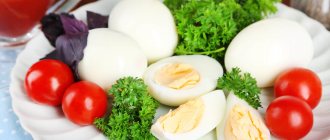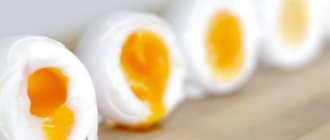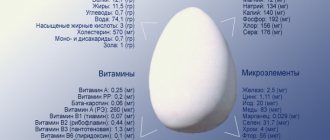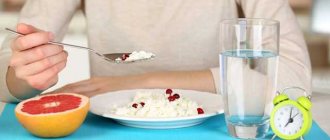During illness, in addition to medications, a correct diet and a certain diet play an important role in maintaining strength and restoring the body. Therapeutic diets help
a speedy recovery, replenishing the lack of nutrients and vitamins, as well as preventing the disease from becoming chronic. For some diseases, a balanced menu is almost the only method of treatment (for example, obesity). The technology of food processing, the temperature regime of the food consumed, portion sizes, frequency and time of meals are very important.
Exacerbations of many chronic diseases are closely related to all kinds of nutritional disorders: changes in diet for diabetes lead to a sharp increase in blood sugar, dry mouth and increased thirst. In chronic pancreatitis, after eating fatty and fried foods, fatty infiltration of the liver and pancreas begins to progress. When eating salty foods, patients suffering from hypertension experience an increase in blood pressure. Therefore, an individual set of products is selected for each patient in accordance with metabolic, functional and other changes in the internal organs. As you apply the recommended diet, it can be gradually adjusted. Nutritionists take into account not only the current diagnosis, the form and stage of the disease, the patient’s body weight, but also the likelihood of allergic reactions.
Principles of therapeutic nutrition
The principles of proper and rational nutrition are completeness, variety, moderation. The diet must satisfy a person’s daily need for nutrients in the proportions required by the body. It is very important to take into account the energy value of the dishes offered. Energy consumption to maintain metabolic processes and physical effort must be compensated by the composition of permitted products. In sanatorium-resort and medical institutions they use a numbered diet system. Many treatment tables have several options, for example: N 7a, 76, 7b, 7d. Each table is designed to prevent and treat a specific disease, and in the case of several diseases, the doctor may prescribe a combination of two or more diets.
Organization of dietary meals includes:
- selection of high-quality food composition (increasing or decreasing the amount of proteins, fats and carbohydrates).
- selection of the nature of culinary processing (stewing, baking, boiling and other methods).
- determination of the regime (volume of portions and meal times).
The basis of all therapeutic diets
– complete exclusion of alcohol, fried, fatty, spicy and pickled foods, as well as large amounts of sugar and caffeine. Cooking methods: steamed, stewed or boiled. Dietary dishes may have a specific appearance, so it is advisable to serve them with a combined side dish of different vegetables, garnished with parsley and dill. It is very important to eat regularly at the same hours, since in this case gastric juice is actively produced at the set time, promoting better digestion. During the period of recovery and return to an active lifestyle, it is advisable not to change the general principles of the diet. You can add other methods of preparing dishes, without giving up home-canned vegetables and fruits. The question of the possibility of consuming previously prohibited products is decided only by the attending physician.
Menu tables on the egg diet
The egg diet is not essentially a mono-diet, as is commonly believed. But nevertheless, it is very strict and does not allow serious substitution of these products. But the results won’t take long to arrive. Below you can see the full menu for both the short seven-day egg diet and the four-week one.
Diet menu for the week
The egg diet for a week is more like a mono-diet due to the large number of eggs consumed. However, you can add greens and lettuce leaves to add variety to the menu. Their calorie content is too low to affect the final result.
| 1st day | 2nd day | 3rd day | 4th day | 5th day | 6th day | 7th day | |
| breakfast | two boiled (hard-boiled or soft-boiled) chicken eggs + half a grapefruit + unsweetened coffee | two boiled (hard-boiled or soft-boiled) chicken eggs + half a grapefruit + unsweetened coffee | two boiled (hard-boiled or soft-boiled) chicken eggs + half a grapefruit + unsweetened coffee | two boiled (hard-boiled or soft-boiled) chicken eggs + half a grapefruit + unsweetened coffee | two boiled (hard-boiled or soft-boiled) chicken eggs + half a grapefruit + unsweetened coffee | two boiled (hard-boiled or soft-boiled) chicken eggs + half a grapefruit + unsweetened coffee | two boiled (hard-boiled or soft-boiled) chicken eggs + half a grapefruit + unsweetened coffee |
| dinner | two boiled (hard-boiled or soft-boiled) chicken eggs + tomato + favorite unsweetened tea | two boiled (hard-boiled or soft-boiled) chicken eggs + orange | two boiled (hard-boiled or soft-boiled) chicken eggs + a portion of spinach + your favorite unsweetened tea | two boiled (hard-boiled or soft-boiled) chicken eggs + a portion of spinach + unsweetened coffee | two boiled (hard-boiled or soft-boiled) chicken eggs + a portion of spinach + unsweetened coffee | undressed salad of your favorite fruits | 200 grams of boiled chicken breast + two unsweetened tomatoes + orange |
| dinner | two boiled (hard-boiled or soft-boiled) chicken eggs + orange + salad of boiled vegetables without oil | veal steak + raw vegetable salad without oil | two boiled (hard-boiled or soft-boiled) chicken eggs + boiled vegetable salad without oil + 100 grams of low-fat cottage cheese | two boiled (hard-boiled or soft-boiled) chicken eggs + salad of boiled vegetables without oil + 100 grams of any unsalted fish | two boiled (hard-boiled or soft-boiled) chicken eggs + salad of boiled vegetables without oil + 100 grams of any unsalted fish | two boiled (hard-boiled or soft-boiled) chicken eggs + raw vegetable salad + a piece of boiled chicken | two boiled (hard-boiled or soft-boiled) chicken eggs + raw vegetable salad + unsweetened coffee |
Menu for the egg diet for 4 weeks
The four-week version of the detailed egg diet can be divided into two periods. The first of which is the diet itself, and the purpose of the second is to consolidate the result obtained. It is very important to observe the order and quantity of the specified products. In order to slightly diversify the menu, it is allowed to replace chicken with other types of meat or fish. The same goes for vegetables. You can safely change them based on the list of permitted ones. Grapefruit and orange are interchangeable.
First period menu table.
| breakfast | dinner | dinner | |
| 1st day | two boiled (hard-boiled or soft-boiled) chicken eggs + half a grapefruit | apples, as much as you can eat | 200 grams of veal baked in foil with spices + lettuce |
| 2nd day | two boiled (hard-boiled or soft-boiled) chicken eggs + half an orange | 200 grams of grilled chicken fillet, seasoned with lemon juice + herbs | raw vegetable salad + orange + two boiled (hard-boiled or soft-boiled) chicken eggs + a piece of whole grain or rye bread |
| 3rd day | two boiled (hard-boiled or soft-boiled) chicken eggs + half a grapefruit | any unsalted sheep cheese as much as you can eat + medium-sized tomato + a piece of whole grain or rye bread | 200 grams of grilled chicken fillet, seasoned with lemon juice + herbs |
| 4th day | two boiled (hard-boiled or soft-boiled) chicken eggs + half an orange | apples, as much as you can eat | 200 grams of veal baked in foil with spices + lettuce |
| 5th day | two boiled (hard-boiled or soft-boiled) chicken eggs + half a grapefruit | two boiled (hard-boiled or soft-boiled) chicken eggs + boiled asparagus as much as you can eat | grapefruit + 200 grams of grilled fish with lettuce |
| 6th day | two boiled (hard-boiled or soft-boiled) chicken eggs + half an orange | apples, as much as you can eat | beef steak with lettuce |
| 7th day | two boiled (hard-boiled or soft-boiled) chicken eggs + half a grapefruit | boiled veal + medium-sized tomato + grapefruit + steamed green beans | boiled veal + medium-sized tomato + grapefruit + steamed green beans |
| 8th day | two boiled (hard-boiled or soft-boiled) chicken eggs + half an orange | beef steak with lettuce | two boiled (hard-boiled or soft-boiled) chicken eggs + medium-sized tomato + lettuce |
| 9th day | two boiled (hard-boiled or soft-boiled) chicken eggs + half a grapefruit | beef steak with lettuce | two boiled (hard-boiled or soft-boiled) chicken eggs + medium-sized tomato + lettuce |
| 10th day | two boiled (hard-boiled or soft-boiled) chicken eggs + half an orange | raw vegetable salad + 200 grams of chicken baked in foil | two boiled (hard-boiled or soft-boiled) chicken eggs + orange |
| 11th day | two boiled (hard-boiled or soft-boiled) chicken eggs + half a grapefruit | two boiled (hard-boiled or soft-boiled) chicken eggs + 100 grams of low-fat cottage cheese + favorite vegetable | two boiled (hard-boiled or soft-boiled) chicken eggs |
| 12th day | two boiled (hard-boiled or soft-boiled) chicken eggs + half an orange | salmon steak + several unsweetened tomatoes | two boiled (hard-boiled or soft-boiled) chicken eggs |
| 13th day | two boiled (hard-boiled or soft-boiled) chicken eggs + half a grapefruit | salmon steak + several unsweetened tomatoes + orange | salad of your favorite fruits |
| 14th day | two boiled (hard-boiled or soft-boiled) chicken eggs + half an orange | 200 grams of lean pork + orange + favorite vegetable | 200 grams of lean pork + orange + favorite vegetable |
Second period menu table.
| breakfast | dinner | dinner | |
| 1st day | favorite fruits, as much as you can eat | favorite fruits, as much as you can eat | favorite fruits, as much as you can eat |
| 2nd day | grilled vegetables, as much as you can eat | raw vegetable salad, as much as you can eat | grilled vegetables, as much as you can eat |
| 3rd day | favorite fruits, as much as you can eat | grilled vegetables, as much as you can eat | raw vegetable salad, as much as you can eat |
| 4th day | salmon steak + raw cabbage salad, as much as you can eat | salmon steak + raw cabbage salad, as much as you can eat | salmon steak + raw cabbage salad, as much as you can eat |
| 5th day | veal baked in foil with spices + any grilled vegetables, as much as you can eat | veal baked in foil with spices + any grilled vegetables, as much as you can eat | veal baked in foil with spices + any grilled vegetables, as much as you can eat |
| 6th day | apples, as much as you can eat | apples, as much as you can eat | apples, as much as you can eat |
| 7th day | oranges, as much as you can eat | oranges, as much as you can eat | oranges, as much as you can eat |
| 8th day | beef steak + cucumber + grapefruit | 200 grams of canned tuna + salad of two cucumbers and three tomatoes | beef steak + cucumber + slice of whole grain bread |
| 9th day | a small piece of boiled veal + orange + lettuce | salad of three cucumbers and three tomatoes + a slice of whole grain bread | a small piece of boiled veal + apple + cucumber |
| 10th day | a small plate of boiled asparagus + a piece of whole grain bread | salad of tomatoes, two cucumbers and 50 grams of low-fat cottage cheese | small plate of boiled green beans + grapefruit |
| 11th day | grilled chicken breast + grapefruit | salad of one cucumber and three tomatoes + a slice of whole grain bread | grilled chicken breast with lettuce |
| 12th day | one hard-boiled egg + grapefruit | two large tomatoes + lettuce leaves | one hard-boiled egg + one tomato |
| 13th day | baked veal + grapefruit | salad of two tomatoes and two cucumbers + 100 grams of low-fat cottage cheese | a glass of low-fat kefir + baked veal |
| 14th day | 100 grams of canned tuna + 100 grams of grilled vegetables + orange | salad of two tomatoes and two cucumbers + 40 grams of low-fat cottage cheese + a slice of whole grain bread | 100 grams of canned tuna + 100 grams of grilled vegetables |
Medical treatment tables. Purpose.
In sanatorium-resort and medical institutions they use a numbered diet system. Many treatment tables have several options, for example: N 7a, 76, 7b, 7g. Each table is designed for the prevention and treatment of a specific disease, and in the case of several diseases, the doctor may prescribe a combination of two or more diets. A feature of all medical tables from 1 to 15 is the complete exclusion of alcohol!
Diet No. 1, 1a, 1b
– stomach and duodenal ulcers;
Diet No. 2
– chronic and acute gastritis, colitis, enteritis, chronic enterocolitis;
Diet No. 3
– constipation;
Diet No. 4, 4a, 4b, 4c
– intestinal diseases with diarrhea;
Diet No. 5, 5a
– diseases of the biliary tract and liver;
Diet No. 6
– urolithiasis, gout;
Diet No. 7, 7a, 7b
– chronic and acute nephritis;
Diet No. 8
– obesity;
Diet No. 9
- diabetes;
Diet No. 10
– diseases of the cardiovascular system;
Diet No. 11
– tuberculosis;
Diet No. 12
– diseases of the nervous system;
Diet No. 13
– acute infectious diseases;
Diet No. 14
– kidney disease with the passage of oxalate stones;
Diet No. 15
– diseases that do not require special diets.
Characteristics and description of therapeutic diets
Table No. 1
Table No. 1 is indicated for gastritis with high acidity, duodenal and gastric ulcers during the period of exacerbation and at the subsiding stage.
Diet:
4-5 times a day in small portions, mostly pureed
Duration:
at least 2 months
It is recommended to consume pureed vegetable soups and porridges, vegetable purees (except cabbage), boiled lean fish and beef, steam cutlets from them, boiled skinless chicken, whole milk, vegetable and butter, as well as cream, fresh sour cream and cottage cheese, soft-boiled eggs , stale white bread, baked apples, sweet fruits, fruit and vegetable juices, puddings, biscuits, jelly, weak tea and coffee. It is necessary to limit the consumption of strong broths and coarse vegetable fiber. Spices, strong coffee, mushrooms, and hard-boiled eggs are completely excluded.
Table No. 1a
Table No. 1a is indicated for a sharp exacerbation of chronic gastritis, gastric and duodenal ulcers in the first week of treatment, a burn of the esophagus, as well as for acute gastritis on days 1-4 of treatment.
Diet:
6-7 times a day in small portions, warm
Duration:
at least 2 months
It is recommended to consume milky and slimy soups from cereals and pureed vegetables, liquid porridges, soft-boiled eggs and steam omelettes, soufflé from lean fish or beef, olive and butter (added to the dish), berry jelly, weak tea, rosehip decoction. It is advisable to limit salt and drink no more than one and a half liters of liquid per day. Vegetable fiber, broths, mushrooms, bread and bakery products, fermented milk products, spices, coffee and cocoa are completely excluded from the daily menu.
Table No. 1b
Table No. 1b is indicated when the manifestations of chronic gastritis and gastric ulcer subside.
Diet:
6 times a day in small portions
Duration:
a few days
It is recommended to consume slimy soups, liquid porridges, soft-boiled eggs, soufflés made from lean fish or beef, olive and butter, berry jelly, cream, fruit juices, weak tea, and rosehip decoction. You can also add steamed fish and meat dishes, pureed milk soups with vegetables, pureed milk porridge, and wheat crackers. Salt consumption should be limited.
Sign up for a consultation on therapeutic diets
Make an appointment
Table No. 2
Table No. 2 is indicated for chronic gastritis with secretory insufficiency, chronic enterocolitis, as well as during the recovery period after surgery or during acute infection.
Diet:
meals 4-5 times a day, boiled, steamed, baked or lightly fried without breading
Duration:
long time
It is recommended to consume soups from cereals and vegetables in weak fish and meat broths, lean beef and chicken (stewed, steamed, baked, in the form of jelly), lean fish (boiled, steamed, jellied), lean lightly salted herring, butter, fresh kefir and sour cottage cheese, light mild cheese, soft-boiled eggs, scrambled eggs, dried white bread, mashed boiled carrots and beets, boiled cauliflower, stewed pumpkin or zucchini, herbs, sauces (meat, fish, sour cream and vegetable broth), weak coffee and tea , rosehip decoction. Excluded from the diet are fresh wheat bread and rich confectionery products, canned food, smoked meats, fatty meats and fish, cucumbers, garlic, bell peppers, legumes, whole milk, carbonated drinks, hot seasonings and spices.
Table No. 3
Table No. 3 is indicated for diseases with frequent constipation during periods of exacerbation or remission.
Diet:
4-5 times a day
Duration:
no limits
It is recommended to consume foods that enhance intestinal motility, as well as wholemeal wheat bread, soups with low-fat broth or vegetable broth, prunes, dried apricots, lean meats and fish, buckwheat and pearl barley porridge, cottage cheese, cheesecakes, fresh kefir, hard-boiled eggs, homemade compotes, juices, mineral water. You can add butter or olive oil to prepared dishes. At night, be sure to drink kefir, eat a few prunes or grated beets. You should not eat cocoa, strong tea, jelly, turnips, radishes, garlic, or mushrooms.
Table No. 4
Table No. 4 is indicated for gastroenterocolitis, chronic and acute enterocolitis, dysentery, and after intestinal surgery.
Diet:
every 5-6 hours in small warm portions
Duration:
no more than 5-7 days
It is recommended to eat stale crackers from white bread, soft-boiled eggs, cottage cheese, semolina and rice porridge in water, butter, boiled meat and fish, three-day kefir, jelly, blueberry and black currant infusion, rosehip infusion, weak coffee and tea. Products that enhance intestinal motility, as well as pickles, smoked foods, and spices are excluded. The amount of salt is limited.
Table No. 4a
Table No. 4a is indicated for chronic colitis with a predominance of fermentation processes.
Diet:
every 5-6 hours in small warm portions
Duration:
a few days
The nutritional composition is the same as in diet Table No. 4, however, it is recommended to sharply limit carbohydrate-rich foods (bread, cereal, sugar) and increase the protein content through meat and cottage cheese dishes.
Table No. 4b
Table No. 4b is indicated for chronic colitis during the period of attenuation of the disease.
Diet:
4-6 times a day, boiled or steamed warm dishes in pureed form or with a slimy consistency
Duration:
1-2 months
The nutritional composition is the same as in the diet Table No. 4, however, it is possible to expand the daily menu with snacks (mild cheese, jellied lean meat or tongue, doctor’s or veal sausage, pate, soaked herring) and sauces based on weak meat and fish broths with the addition of bay leaf, dill, and a small amount of sour cream.
Table No. 4b
Table No. 4c is indicated for chronic and acute intestinal diseases during the recovery period.
Diet:
5 times a day
Duration:
a few months
The nutritional composition is the same as in diet Table No. 4 with the exclusion of foods that enhance fermentation processes in the intestines, limiting salt intake and a slight increase in the amount of protein foods. Dishes should be steamed, baked or boiled. Can also be served crushed.
Table No. 5
Table No. 5 is indicated for acute hepatitis and cholecystitis, chronic hepatitis and cholecystitis, liver cirrhosis, as well as during the recovery period.
Diet:
5-6 times a day in small warm portions
Duration:
long time
It is recommended to consume milk and fruit soups without meat, cereal soups with vegetable broth, boiled fish, poultry and lean meats, cottage cheese, kefir, milk, flour dishes and cereals, white and black stale bread, sweet berries and fruits, herbs and vegetables. , honey, jam, fruit and vegetable juices, weak tea with milk. You should limit your intake of fats and salt. Alcoholic drinks, mushrooms, spinach, sorrel, lemon, spices, cocoa, as well as smoked and fatty foods, and canned food are completely excluded.
Table No. 5a
Table No. 5a is indicated for acute diseases of the liver and biliary tract with concomitant diseases of the stomach, intestines, as well as for acute and chronic pancreatitis in the acute stage.
Diet:
5 times a day
Duration:
a few days
It is recommended to eat slightly dried wheat bread, slimy soups from vegetables and cereals, noodles with vegetable broth, lean meat soufflé, boiled lean fish and steam soufflé made from it, boiled or steamed vegetables, porridge with water or with a small amount of milk, fresh cottage cheese and kefir. Eggs, butter and olive oil can only be added to dishes. For sweets - honey, jelly, jellies, compotes and fruit and berry juices, weak tea. All food should be served mostly pureed. Various snacks, spices, turnips, radishes, sorrel, cabbage, spinach, cocoa are excluded.
Sign up for a consultation on therapeutic diets
Make an appointment
Table No. 6
Table No. 6 is indicated for gout and uric acid diathesis, erythremia.
Diet:
5 times a day
Duration:
long time
It is recommended to consume black and white bread, milk and dairy products, honey, sugar, milk and vegetable soups, cereal products, sweet fruits, fruit juices, jam, cucumbers, lettuce, carrots, lean fish and meat, eggs. Drinking plenty of fluids (up to 2-2.5 liters per day) in the form of weak tea, fruit and berry juices, and mineral waters is also prescribed. Meat and fish soups, kidneys, liver, herring, lard, sardines, sprats, mushrooms, pates, spinach, sorrel, legumes, cocoa and coffee are completely excluded.
Table No. 7
Table No. 7 is indicated for acute glomerulonephritis during the recovery period, chronic nephritis without renal failure, hypertension, and nephropathy in pregnant women.
Diet:
4-5 times a day
Duration:
long time
It is recommended to consume vegetarian soups, lean poultry, meat, fish, gray and white bread with bran, pasta, cereals, flour products, milk and fermented milk products, cottage cheese, vegetables (natural, boiled and baked), herbs, fruits, berries, jam, honey You should limit your consumption of sour cream and cream. Carbonated drinks, creams and cakes, legumes, mushrooms, fish and meat broths, canned food, smoked meats, and pickles are completely excluded.
Table No. 7a
Table No. 7a is indicated for acute and chronic nephritis in the acute stage.
Diet:
5 times a day
Duration:
a few days
The nutritional composition is the same as in the Table No. 7 diet with a strict restriction of liquid (no more than 600-800 ml) and salt. It is recommended to eat boiled vegetables, fruits, flour and cereal products, white bread without salt, tea with milk, butter, sugar. Meals should be fractional. Dishes are steamed or boiled and served pureed.
Table No. 7b
Table No. 7b is indicated during recovery from acute kidney inflammation.
Diet:
5 times a day
Duration:
from several days to several months
This diet is a transition from Table No. 7a to Table No. 7. You can eat white salt-free bread, boiled lean fish and meat, and reduce your salt intake. Meals are fractional. Cooking method: boiling or steaming. Vegetables are served only pureed.
Table No. 8
Table No. 8 is indicated for obesity.
Diet:
5-6 times a day
Duration:
long time
This diet is characterized by a decrease in the energy value of the diet due to carbohydrates and fats, while the protein content remains normal or increases. In addition, salt, appetite-stimulating foods and spices, as well as liquids, are limited.
It is recommended to eat rye bread, meat and vegetable soups with cereals, lean fish, poultry and meat (stewed, baked or boiled), jelly, buckwheat porridge, low-fat cottage cheese and fermented milk products, fruits and berries, juices and compotes from them, vegetables with vegetable oil. You should completely exclude products made from butter dough and premium flour, pasta, legumes, cereal and potato soups, fatty fish, poultry and meat, smoked meats, sausages, canned food, fatty cheese, cream, pasta, oatmeal and semolina, spicy and fatty snacks, mayonnaise, sauces, spices and seasonings.
Table No. 9
Table No. 9 is indicated for mild to moderate diabetes. The diet involves individual selection of daily energy value.
Diet:
5 times a day
Duration:
long time
It is recommended to consume protein-bran, wheat and rye bread, soups with vegetable broth, fish, poultry and lean meats, milk, cheese, low-fat cottage cheese, fermented milk products, cereals (buckwheat, oatmeal, pearl barley, wheat), vegetables and fruits in any quantity. Rich flour products, fatty and strong broths, salted fish, sausages, pickled dishes, semolina and pasta, figs, raisins, bananas, dates are completely excluded. Food is served boiled or baked. Fried foods are limited.
Sign up for a consultation on therapeutic diets
Make an appointment
Table No. 10
Table No. 10 is indicated for diseases of the cardiovascular system without signs of circulatory failure. The diet involves limiting animal fats, cholesterol-containing foods, and table salt.
Diet:
4-5 times a day
Duration:
long time
It is recommended to eat wholemeal bread, crackers, crispbread, savory cookies, vegetarian soups (cereal, milk, fruit), low-fat meat broth, milk, cottage cheese, fermented milk products, poultry, fish and lean meat, protein omelet, vegetables with vegetable oil, oatmeal and buckwheat porridge, puddings, casseroles, fermented milk products, low-fat cheese, fresh cottage cheese, fruits and berries, juices from them, weak coffee and tea. Dishes are served boiled or baked. Products made from butter dough, fresh bread, mushroom and fish broths, legume soups, sausages, smoked meats, kidneys, fatty cheeses, legumes, pickled and salted vegetables, fruits, cocoa, strong coffee and tea, and chocolate are completely excluded.
Table No. 10a
Table No. 10a is indicated for diseases of the cardiovascular system with severe symptoms of circulatory failure. The diet involves a sharp restriction of table salt and liquid, as well as the exclusion from the diet of foods and drinks that stimulate the central nervous system, affecting the activity of the heart and kidneys.
Diet:
4-5 times a day
Duration:
long time
An assortment of dishes similar to Table No. 10 is recommended, but the amount of meat and fish is reduced, vegetables are offered only in boiled and pureed form, and fresh fruits are offered only in pureed form. Food is prepared without salt. Rich soups, spicy and salty dishes, strong tea and coffee, and flour products are completely excluded.
Table No. 11
Table No. 11 is indicated for tuberculosis or general exhaustion of the body. This varied and nutritious diet is characterized by increased energy value with a high content of proteins, minerals and vitamins.
Diet:
4-5 times a day
Duration:
a few months
It is allowed to consume almost all dishes, except for fatty poultry (duck) and meat, as well as cooking, beef and lamb fats, and desserts with a lot of cream.
Table No. 12
Table No. 12 is indicated for people with functional diseases of the nervous system.
Diet:
4-5 times a day
Duration:
a few months
It is recommended to consume all foods except rich broths, hot seasonings, various smoked foods, fried and fatty foods, strong coffee and tea, and alcohol. It is advisable to limit the consumption of salt and meat and more often include tongue, liver, legumes, and dairy products in the menu.
Table No. 13
Table No. 13 is recommended for people with acute infectious diseases. The peculiarities of this diet are that dishes are served mainly in liquid form, without the addition of spices and herbs, as well as milk.
Diet:
up to 8 times a day in small portions
Duration:
a few days
You should eat dried wheat bread, low-fat meat and fish broths, meat soufflé or puree, steamed cutlets and meatballs, fish aspic, mucous cereal decoctions, vegetable-based soups, fresh cottage cheese and products made from it, fermented milk drinks, butter, pureed porridge ( buckwheat, semolina, rice, oatmeal), sweet fruits, fruit and berry juices, jelly, mousses, marmalade, tea with lemon, weak coffee. Fresh bread, rich pastries, fatty fish and meat, smoked meats, sausages, canned food, cheeses, full-fat sour cream and cream, whole milk, pasta, barley and pearl barley, millet, onions, garlic, radishes, white cabbage are completely excluded from the diet. , legumes, cucumbers, cocoa, chocolate, hot sauces, high fiber fruits.
Table No. 14
Table No. 14 is indicated for urolithiasis with phosphate stones and alkaline urine reaction. The diet is a complete diet with a limitation of calcium-rich foods.
Diet:
5 times a day
Duration:
long time
It is recommended to consume bread and confectionery, weak broths and soups, fish and meat, cereals in any form of culinary processing, pumpkin, green peas, sour berries and apples, mushrooms, honey, weak tea and coffee, cranberry or lingonberry fruit drinks. Vegetable and milk soups, salted fish, smoked meats, dairy products, cereals with milk, vegetables (except those permitted by a nutritionist), vegetable salads, and hot sauces should be completely excluded from the diet.
Table No. 15
Table No. 15 is indicated for diseases without the need for therapeutic diets. This is a complete diet with plenty of vitamins, excluding spicy and hard-to-digest foods, as well as limiting canned foods.
Diet:
4-5 times a day
Duration:
no limits
Sign up for a consultation on therapeutic diets
Make an appointment
Varieties of the egg diet
There are several varieties of the egg diet. All of them are quite effective, although they are designed for different results. Therefore, the choice depends solely on how many kilograms you need to lose and how quickly.
Egg-orange diet
The egg-orange diet, unlike other varieties, is a mono-diet and its entire menu comes down to hard-boiled eggs and fresh oranges or grapefruits. This nutrition system is ideal if you urgently need to lose a few pounds before an event. The main rule is to drink plenty of water. Eggs and oranges are eaten alternately every hour during the day. The last meal is taken no later than eight to nine o'clock in the evening. Maintaining this diet for more than 5-7 days is contraindicated. 3-4 days is considered ideal. During this period, you can easily lose 2-5 kilograms, depending on your initial weight.
Seven day diet
The seven-day egg diet is designed to consume four to six eggs per day. It is mandatory to eat them for breakfast. At the same time, one of the meals for lunch or dinner a couple of times during the week can be replaced with fish or lean meat. Weight loss can be up to 10 kilograms during this period. In some cases, it may be extended for another seven days. Then the menu of the first week is repeated during the second.
Egg diet for 4 weeks
This type of egg diet is the most effective and allows you to lose up to 25 kilograms of weight. An additional advantage is that the results achieved will last for quite a long time. Despite its length, it is quite easy to tolerate due to the large amount of fruits and vegetables. During the third week, food intake is generally limited only to how much you can eat.
Where can I sign up for a consultation on therapeutic diets?
At the multidisciplinary medical center you can always sign up for a consultation on therapeutic diets
. Our medical center is located between the Konkovo and Belyaevo metro stations (South-Western Administrative District of Moscow in the area of the Belyaevo, Konkovo, Teply Stan, Chertanovo, Yasenevo, Sevastopolskaya, New Cheryomushki metro stations " and "Trade Union"). Here you will find highly qualified personnel and the most modern diagnostic equipment. Our clients will be pleasantly surprised by our quite affordable prices.










